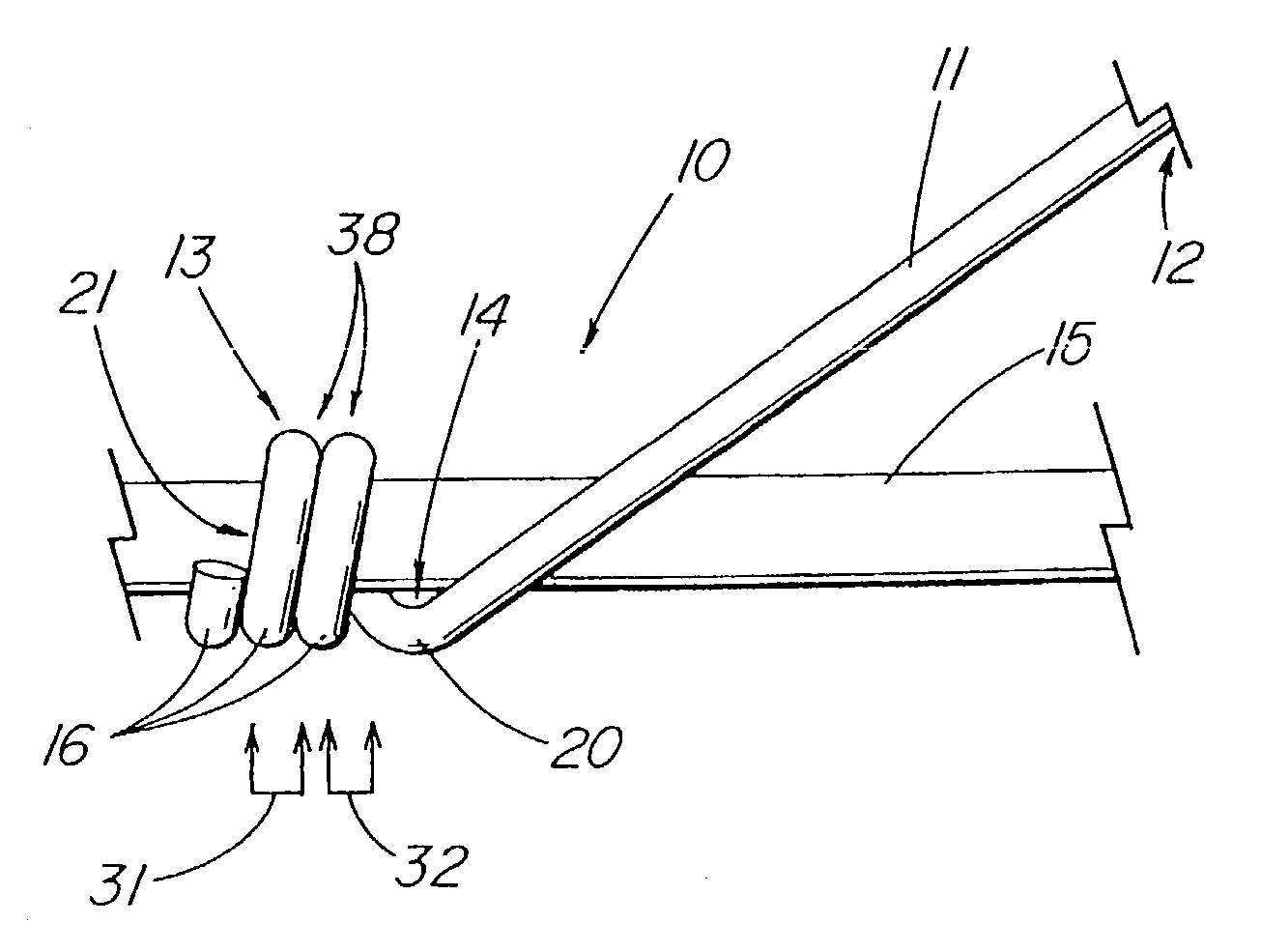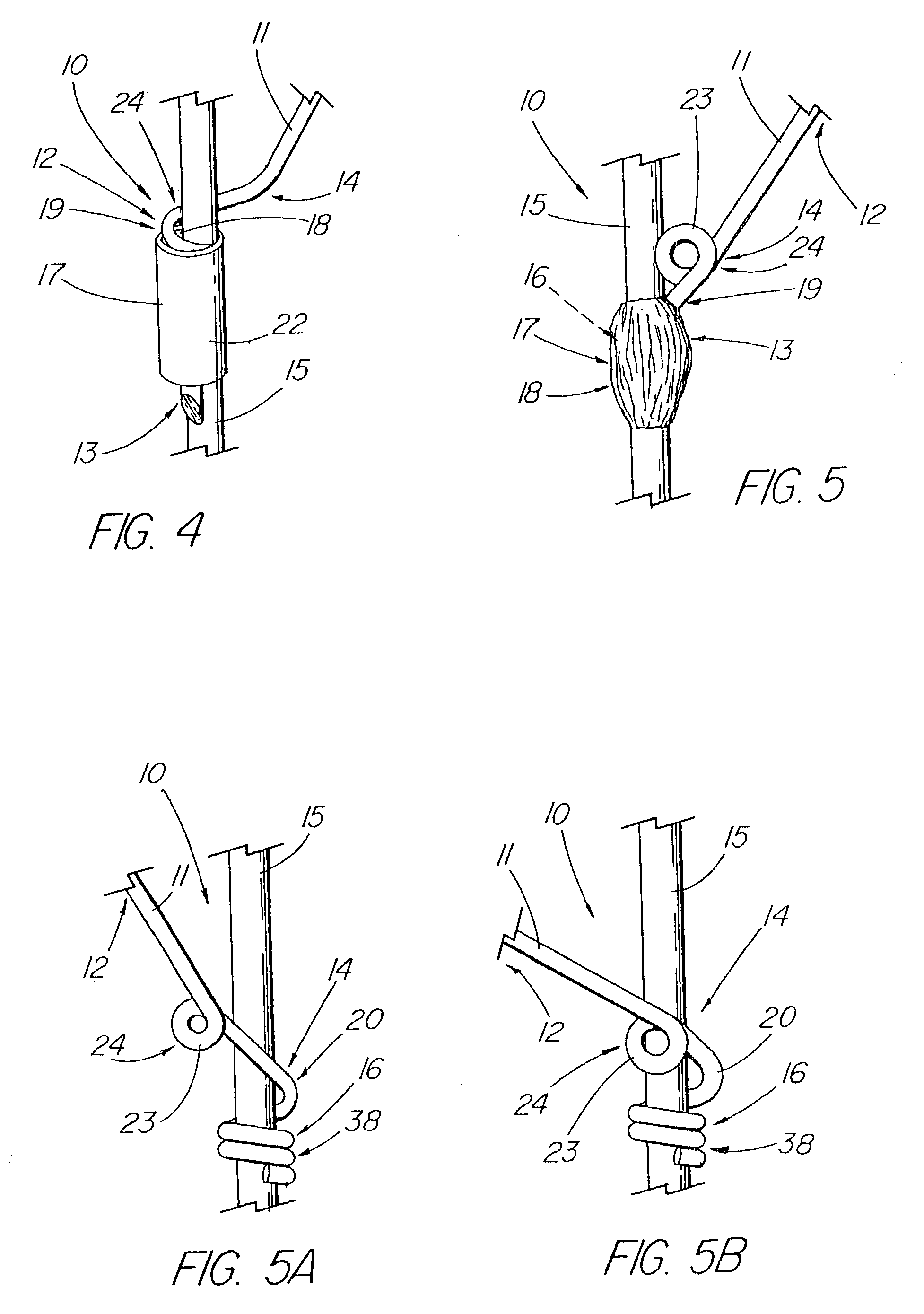Flexible barb for anchoring a prosthesis
a flexible, prosthesis technology, applied in the field of medical devices, can solve the problems of increasing the risk of death of patients, no longer excluding aneuryms, and migration, so as to reduce the risk of fracture, facilitate lateral flexing of the barb, and reduce the likelihood of fractur
- Summary
- Abstract
- Description
- Claims
- Application Information
AI Technical Summary
Benefits of technology
Problems solved by technology
Method used
Image
Examples
Embodiment Construction
[0022]FIGS. 2–8 depict a medical prosthesis 10, such as a stent, stent graft, valve, vessel occluder, filter, or other intraluminal medical device, that includes one or more barbs 11 that comprise an anchoring portion 12 sized and oriented to engage tissue for the purpose of anchoring the device and preventing the downstream migration thereof; a basal portion 13 located about the physical union between the barb and the strut of the prosthesis 10 to which it is affixed; and a stress-dispersing region that forms a transition between the basal portion 13 and anchoring portion 12 of the barb 11. The stress-dispersing (or stress-reducing) region 14 of the present invention comprises a section of the barb that has been shaped and configured to receive most of the forces acting upon the anchoring portion 12 or moment arm of the barb as it bends and distribute them throughout that region 14, rather than allowing them to be concentrated at a single point or relatively narrow region, such as ...
PUM
 Login to View More
Login to View More Abstract
Description
Claims
Application Information
 Login to View More
Login to View More - R&D
- Intellectual Property
- Life Sciences
- Materials
- Tech Scout
- Unparalleled Data Quality
- Higher Quality Content
- 60% Fewer Hallucinations
Browse by: Latest US Patents, China's latest patents, Technical Efficacy Thesaurus, Application Domain, Technology Topic, Popular Technical Reports.
© 2025 PatSnap. All rights reserved.Legal|Privacy policy|Modern Slavery Act Transparency Statement|Sitemap|About US| Contact US: help@patsnap.com



